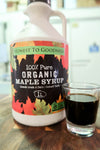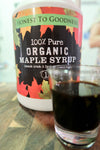Widely used in health foods for chocolate-like flavouring, and has vitamin A, B vitamins, and several important minerals.
Ceratonia siliqua, commonly known as the carob tree, St John's-bread, or locust bean is a species of flowering evergreen shrub or tree in the pea family, Fabaceae. It is widely cultivated for its edible pods, and as an ornamental tree in gardens. The ripe, dried pod is often ground to carob powder, which can be used to replace cocoa powder. Carob is mildly sweet and is used in powdered, chip, or syrup form as an ingredient in cakes and cookies, and as a substitute for chocolate. While chocolate contains levels of theobromine which are toxic to some mammals, carob contains absolutely no caffeine and no theobromine. The pod has vitamin A, B vitamins, and several important minerals. It contains Magnesium, Calcium, Iron, Phosphorus, Potassium Manganese, Barium, Copper, Nickel, is rich in pectin, has abundant protein, and has no oxalic acid, which interferes with absorption of calcium. Consequently, carob flour is widely used in health foods for chocolate-like flavouring. A very fine polysaccharide gum (locust bean gum)--mucilaginous, odourless, tasteless, and colourless--can also be obtained from the pod and is now used in many products.













